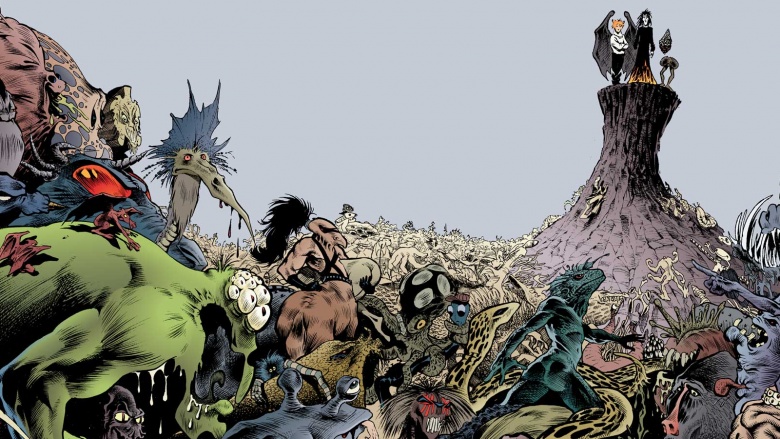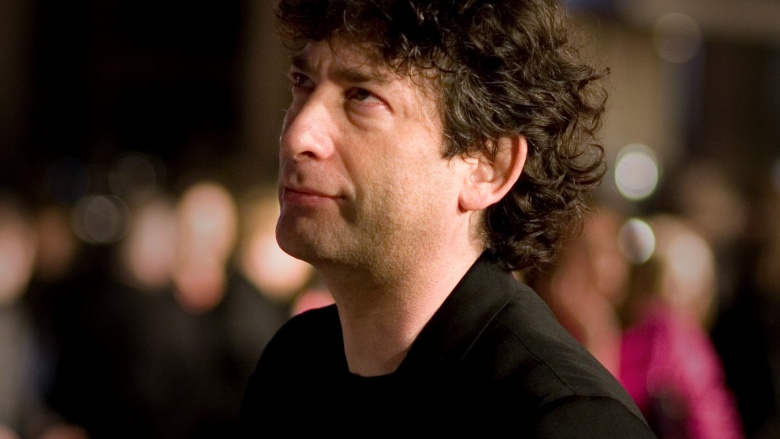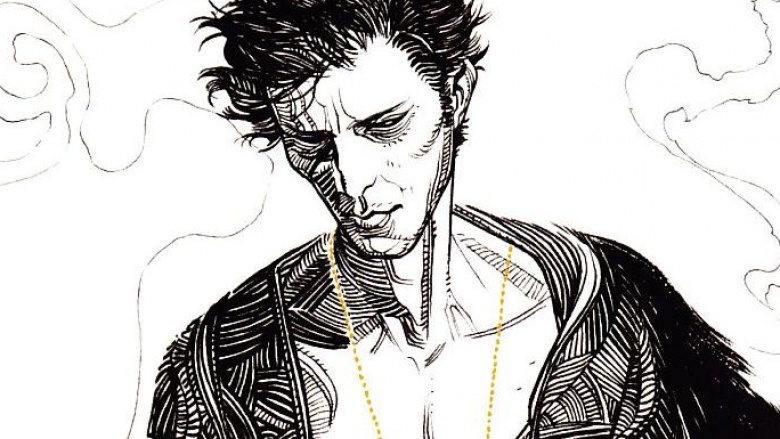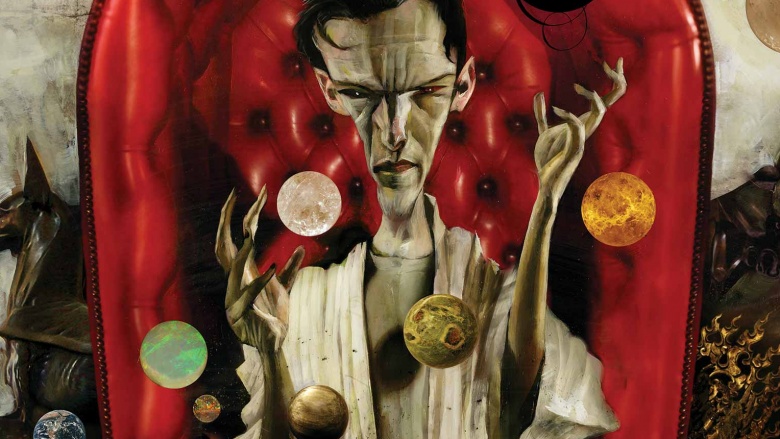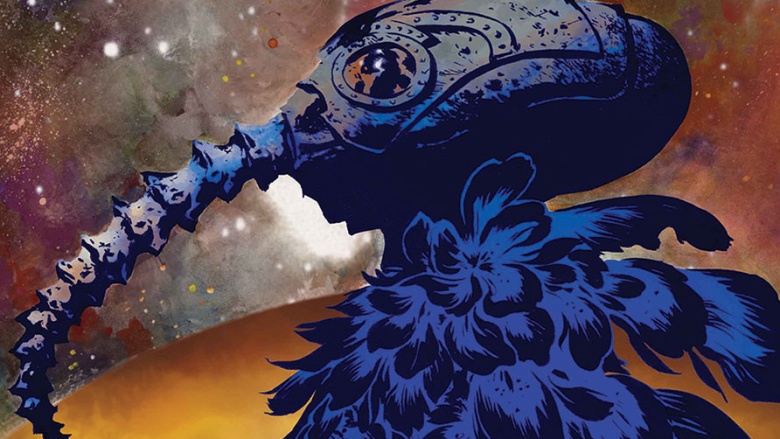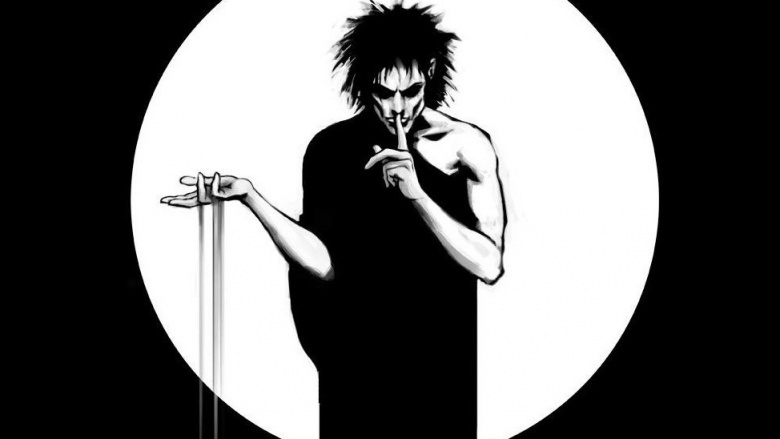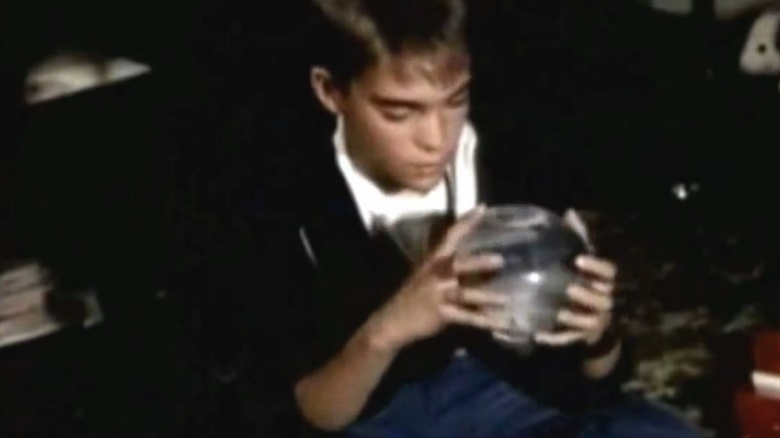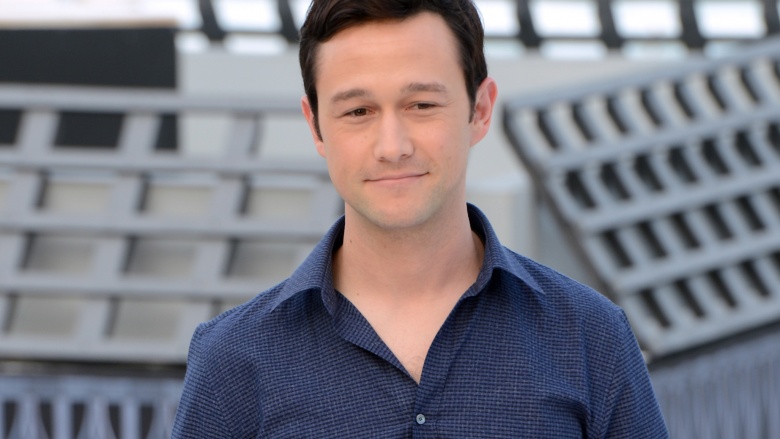Why The Sandman Movie Never Happened
The Sandman, a beloved comic books series from the '80s and '90s, follows Morpheus, aka Dream, aka a litany of other aliases author Neil Gaiman uses to personify dreams. The series traverses the Dreamworld, mythological worlds, Hell, and many other places in a story so vast and imaginative it can only be accessed outside the fabric of reality. Suffice it to say, it's pretty far from a sad ninja-bat with dead parents and a few billion dollars, right? Though several attempts have been made to adapt Sandman for the screen, they haven't worked. Here's why.
The Source Material Is Dense And Challenging
Spanning 17 years and 75 issues, The Sandman utilizes what could be considered the most atypical storytelling route, abandoning any type of traditional beginning, middle, and end narrative structure. Instead, each volume acts as a standalone story dealing with a range of subjects, like what cats dream about, what happens when Lucifer quits and abandons Hell, and many, many more. The standard Hollywood narrative thread that ends with evil neatly defeated and the protagonist changed for the better simply doesn't exist when applied to this series as a whole.
Comic Creator Neil Gaiman Didn't Think It Could Work
To make The Sandman's story film-shaped, to quote Gaiman in David Hughes' Tales From Development Hell, would be "like taking a baby and cutting off both of its arms and one of its legs and nose and trying to cram it in this little box, and filling the rest of the box up with meat." That's not a good starting point, but the comic has a rabid following, so its would-be producers went ahead and commissioned screenwriters Ted Elliott and Terry Rossio to write a draft. Despite his initial misgivings, Gaiman actually liked the draft, though the studio felt it was "undeliverable," which is Hollywood for "there's no room for product placement." This draft and a subsequent attempt by Pulp Fiction co-writer Roger Avary were ultimately shelved due to creative differences between the writers and the studio.
What Were Those Creative Differences?
Again, according to Hughes, producer Jon Peters drove a wedge in the collaboration with increasingly strange notes that were not only off-tone from the comic, but were also just bad, Hollywood clichés that had been done to death. Sand-fans, grab an air-sickness bag; you'll need it for most of these:
-Teenagers at a slumber party holding a séance capture Dream
-The Sandman wears tights and a cape and punches people
-There had to be a rave club scene
-The story had to be tied to Y2K
Once the studio finally got the version they liked, the screenwriter who penned it, William Farmer, admitted "Of course it mangled Sandman, I would never argue that," while acknowledging that he was just starting out in the business and basically going along to get along.
On Film, The Aesthetics Could Never Match The Comic Illustrations
Artist Dave Mckean's cover illustrations for The Sandman are brilliant, mixed-media creations that conjure the wondrous, sometimes beautiful, sometimes nightmarish world of dreams. The panels themselves are equally imaginative and haunting, but are drawn with so many different styles that there is no singular visual aesthetic. Also keep in mind that in the late '90s, we were somewhere in between Lou Ferrigno's Incredible Hulk and Ang Lee's Hulk in terms of Hollywood's acceptable comic book movie adaptations. Of course, there was a precedent for afterlife or dreamworld sequences set by 1998's What Dreams May Come, which, now that we think about it, is actually yet another mark against a Sandman film adaptation.
There Is No Clearly Defined Bad Guy
Another problem, which compounds with the undefined narrative structure, is the lack of a clear bad guy who can only be defeated by our hero after he learns to believe in himself or whatever in order to overcome insurmountable odds. Instead, there are multiple no-win situations that end in death and tragedy for lots of characters who would never have made cool action figures in the first place. Even a clear-cut villainous character like the Corinthian has teeth for eyes. Nobody's kid is getting that for Christmas.
There Is No Love Interest
Yes, Morpheus/Dream once got it on with a mortal woman. That probably would've gotten the studio really excited—until they realized that the story ended with the destruction of a city, the woman being condemned to hell, and not a single person hanging upside down and kissing anyone in the rain.
They Were Going To St. Elsewhere The Ending (It Was All A Dream)
One of the more egregious mistakes of Farmer's studio-guided script was the ending. After Morpheus gets in several boilerplate action movie fistfights with The Corinthian while trying to retrieve the instruments of his office by the year 2000 (this is all in the script...seriously), the big reveal would've been that the entire movie was a dream the whole time! This had to be pitched by someone who not only didn't read a word of the comics, but was actively engaged in a campaign to kill die-hard Sandman fans with rage heart attacks.
Are There Current Plans To Develop The Sandman?
According to Slashfilm, the adaptation rights are currently at New Line, with Joseph Gordon-Levitt attached as a producer/director and possible star. There's no release date, no completed script, and it's not even listed on IMDb yet, which means it's in very early stages of development. Hey, Don Jon, no capes, okay? Yeah, this thing doesn't have a chance.

